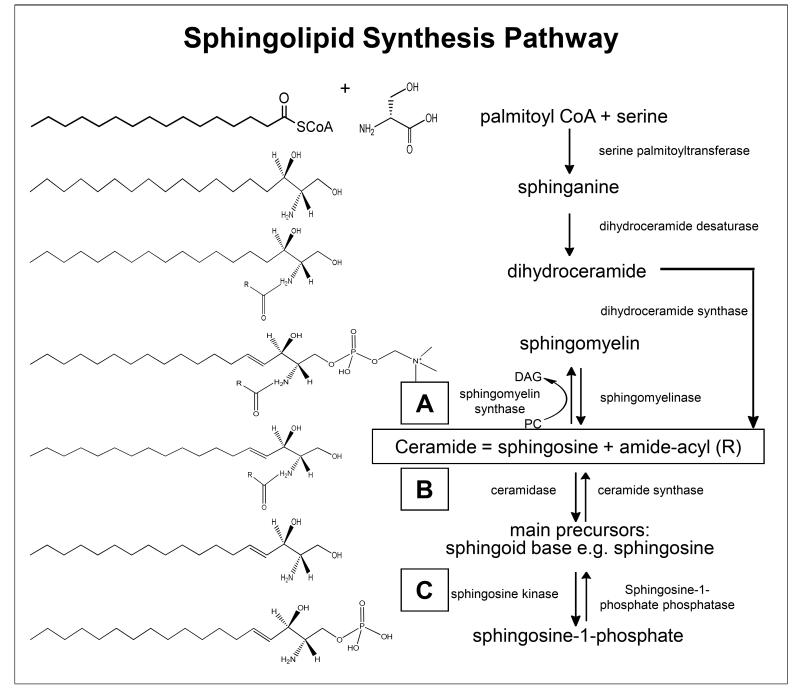Fig. 1.
Schematic depiction of sphingolipid metabolism pathway. Sphingolipids are synthesized de novo from serine plus palmitoyl CoA. Serine palmitoyltransferase catalyses the breakdown of serine plus palmitoyl CoA to sphinganine. Acylation of sphinganine by the enzyme dihydroceramide desaturase to produce dihydroceramide occurs and the final reaction to produce ceramide is catalyzed by dihydroceramide synthase. Ceramide undergoes one of three fates: (a) addition of headgroups to generate sphingomyelins, (b) glycosphingolipids and, (c) cleavage to sphingosine leading to sphingosine-1-phosphate. Boxed letters A, B and C indicate the location of the enzyme(s) in the overall scheme of metabolism responsible for conversion of indicated lipid species. Our identified lipid species and their potential conversion enzymes in these specific locations in the scheme have been indicated in Table 4 and Supplementary Table S3.

